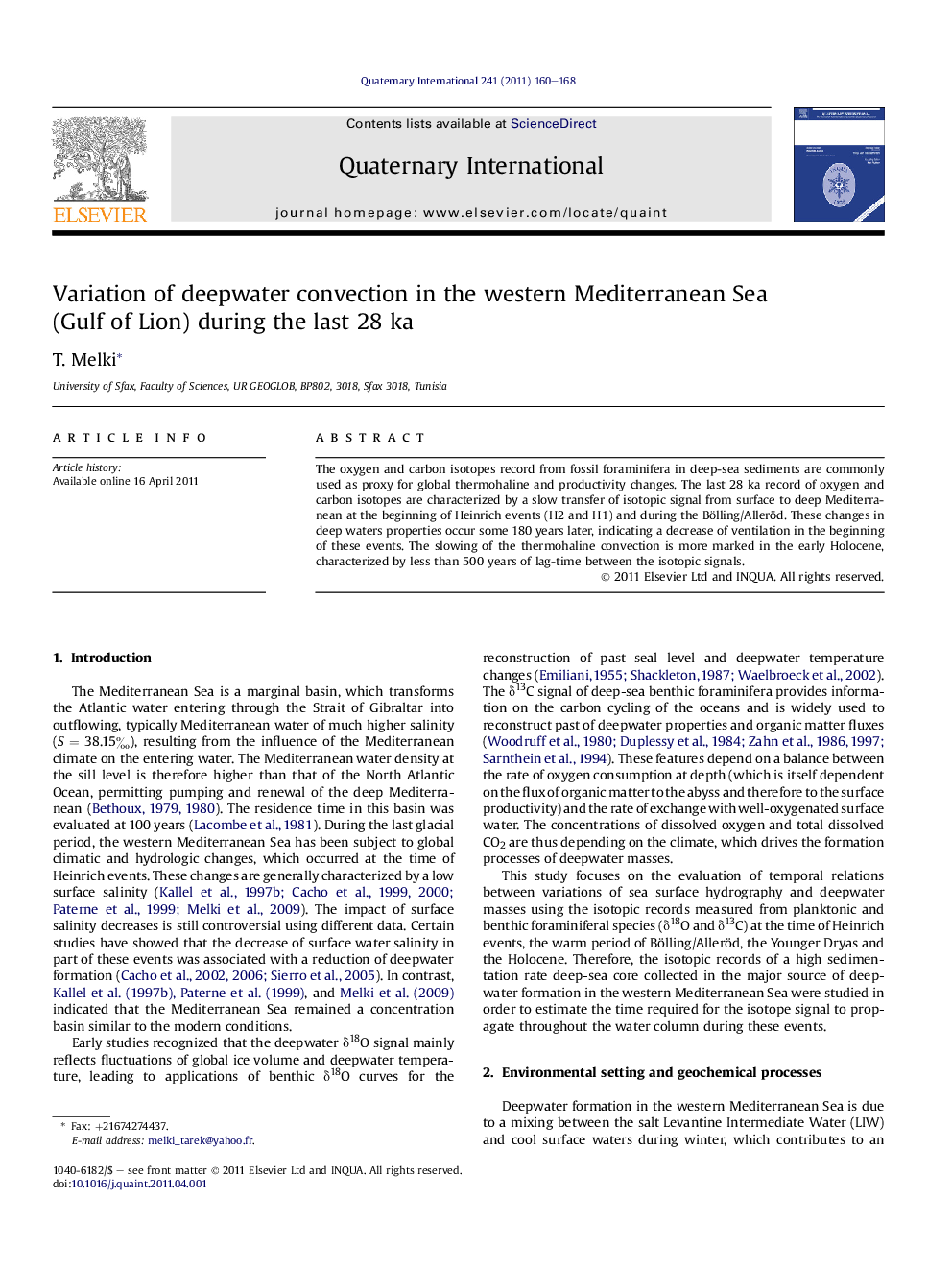| Article ID | Journal | Published Year | Pages | File Type |
|---|---|---|---|---|
| 1043114 | Quaternary International | 2011 | 9 Pages |
Abstract
The oxygen and carbon isotopes record from fossil foraminifera in deep-sea sediments are commonly used as proxy for global thermohaline and productivity changes. The last 28 ka record of oxygen and carbon isotopes are characterized by a slow transfer of isotopic signal from surface to deep Mediterranean at the beginning of Heinrich events (H2 and H1) and during the Bölling/Alleröd. These changes in deep waters properties occur some 180 years later, indicating a decrease of ventilation in the beginning of these events. The slowing of the thermohaline convection is more marked in the early Holocene, characterized by less than 500 years of lag-time between the isotopic signals.
Related Topics
Physical Sciences and Engineering
Earth and Planetary Sciences
Geology
Authors
T. Melki,
